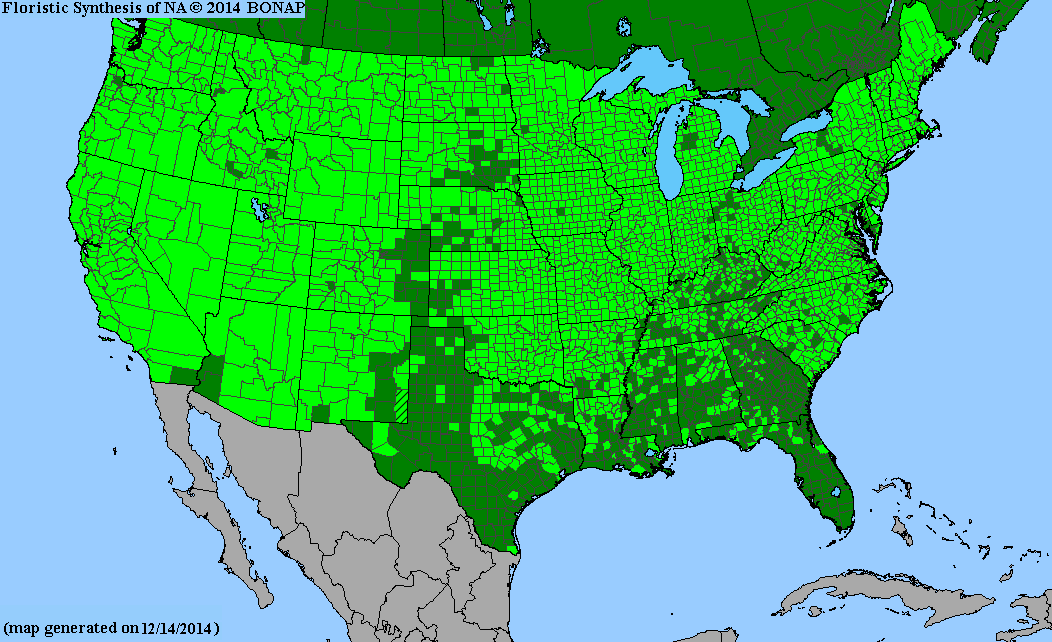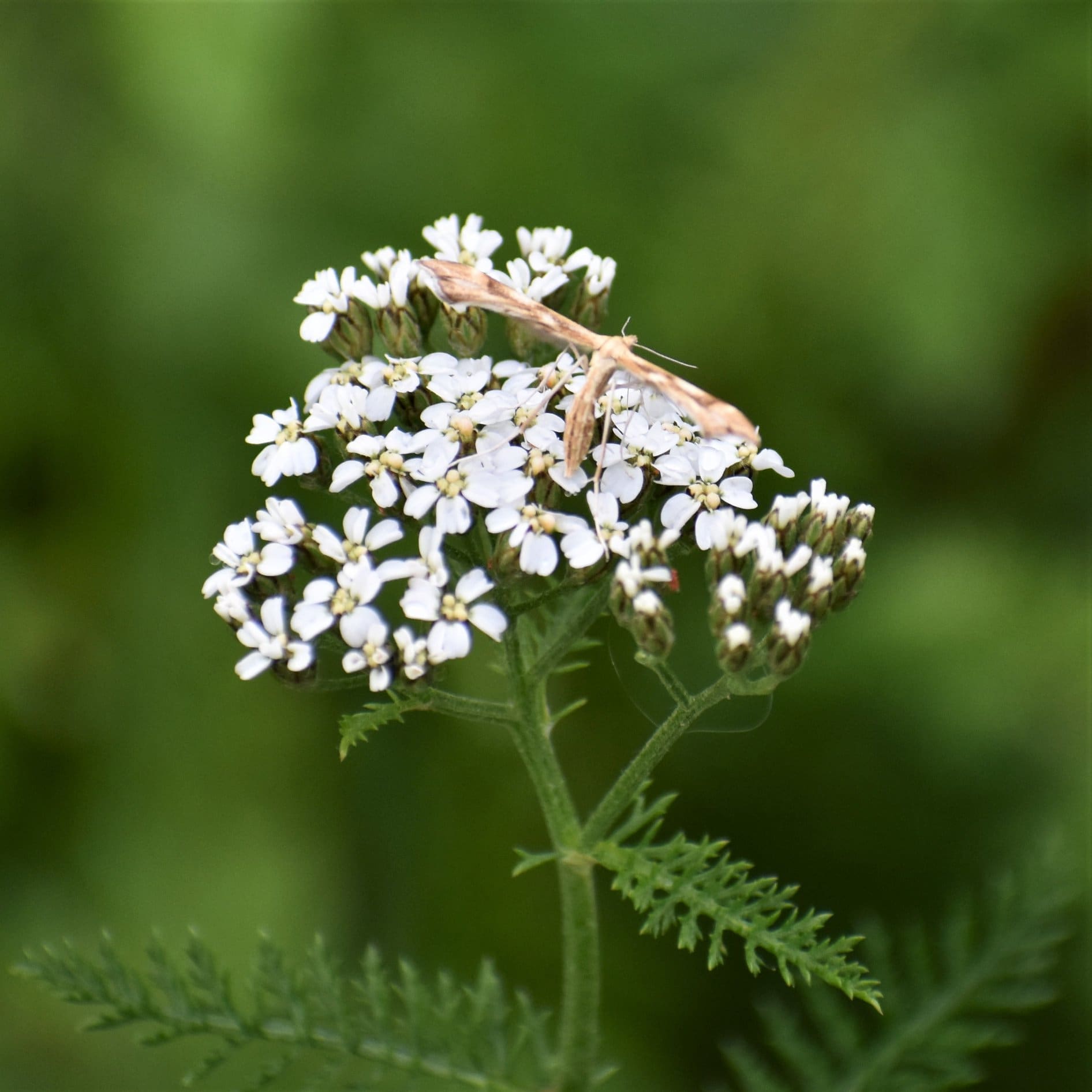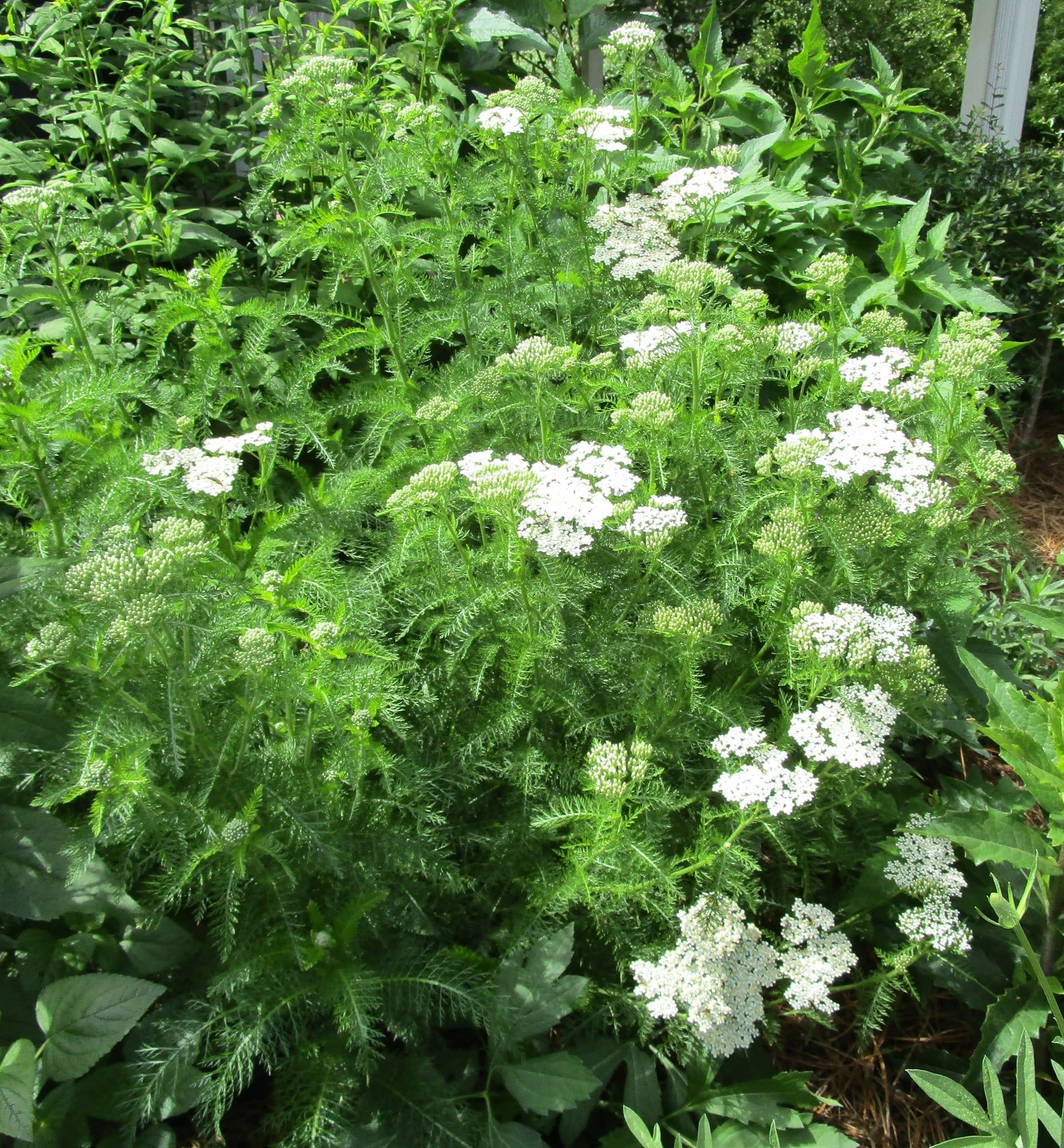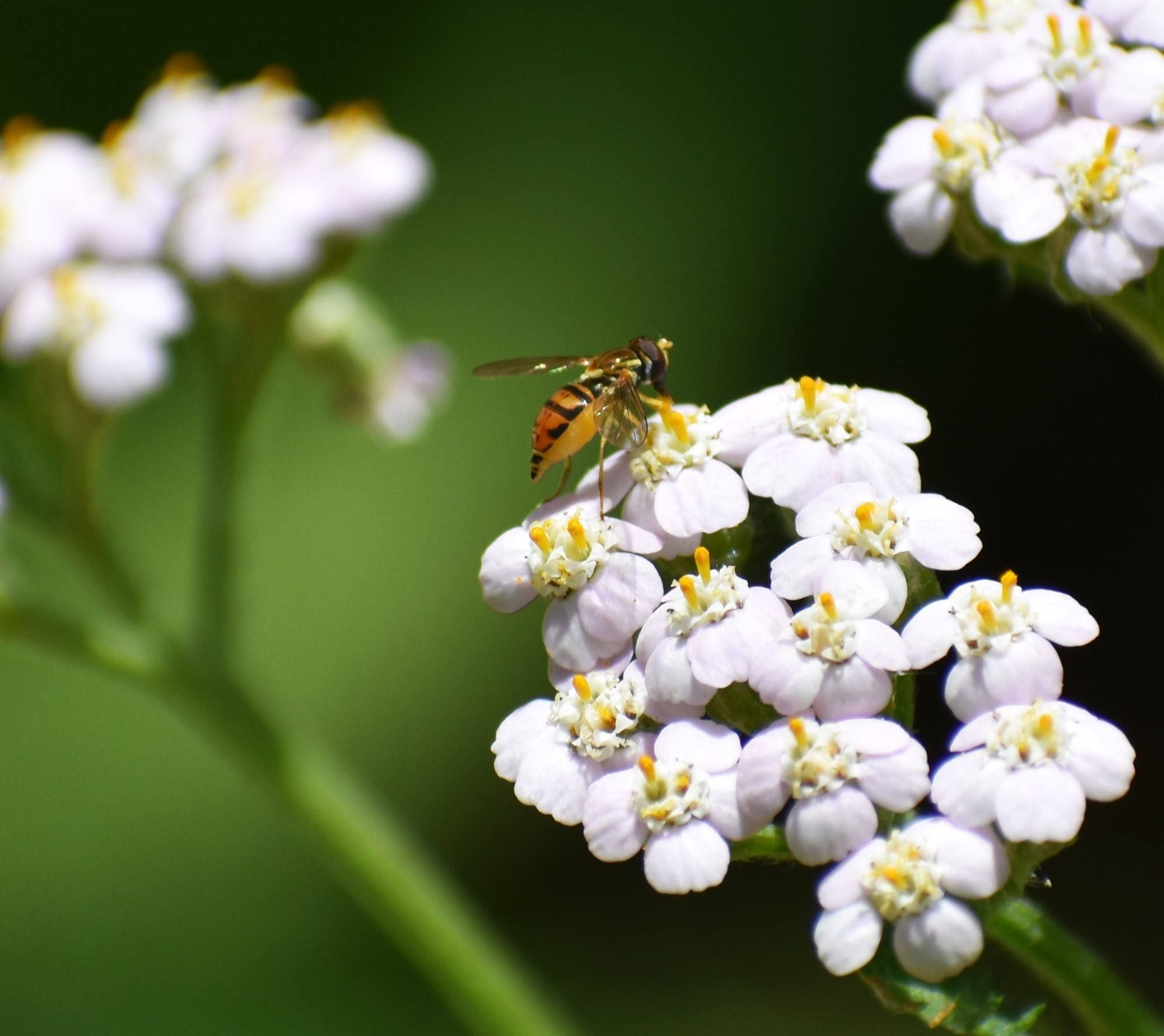Asteraceae
eastern yarrow
Achillea gracilis
Synonyms
Achillea millefolium
Other Common Names
Eastern Thousandleaf
Plant Type
Herbaceous Wildflower
Life Cycle
Perennial
Typical Size
1-3 ft. tall
1-3 ft. wide
Tolerant of
Deer, Drought, Salt Exposure
Inolerant of
Poorly Drained Soil
Propagation
By seed, By division
Plant Propagation Notes
Plants can spread aggressively by rhizomes and they self-seed regularly. They can be propagated by seed or division.
Plant Planting Notes
Plant 12″ apart.
Plants/Diseases
Stem rot, powdery mildew and rust are occasional disease problems.
Wildlife Benefits
Nectar/pollen source for pollinating insects
Leaves
Leaves alternate, oblong to lanceolate, and 1-2 pinnately lobed. Often arrayed in multiple planes. Approximately 1-3 inches long and less than 1 inch wide.
Flowers
Ten to 100 flowers arranged in corymb inflorescences. Each flower has 4-5 petals and is 1.5 by 1.5 mm.
Fruit
Capsule with broadly winged margins.
Toxicity
Low toxicity. May cause skin dermatitis.
Edibility
To make a tea, soak leaves in warm water to remove dirt and debris. Chop leaves and steep in hot water for 10 minutes. Drink as a tea. SOURCE: Crowhurst, A. 1972. The Weed Cookbook. Lancer Books, Inc. New York, 190 pp.

USDA Hardiness Zones
3, 4, 5, 6, 7, 8, 9
Light Exposure
Full Sun, Part Sun/Shade
Soil Moisture
Dry, Medium
Soil Drainage
Well-drained
Soil pH
Neutral (6.0-8.0)
Native in South Carolina?
Yes
Plant Native Habitat
Pastures, meadows, roadsides, stream sides, woodlands, waste grounds, dry or sandy soils, also in damp, clayey, and salty soils.
Global Conservation Status (NatureServe)
Secure (G5)
Federal Conservation Status (USFWS)
Not Listed
Distribution Notes
Common throughout South Carolina
Subspecies
From Weakley’s Flora of the Southeastern United States: South Carolina (2020): “The Achillea millefolium aggregate is a taxonomically very complex entity, with races of different ploidies, and both introduced and native genotypes in e. North America. Ramsey, Robertson & Husband (2008) recommended treating native North American races as A. borealis; most eastern North American populations represent native North American races, most closely allied to e. Asian taxa, with only a few collections of European races from near old port cities (Ramsey, pers. comm.; Ramsey 2011; Levin 2011). Later work suggests that A. borealis should be narrowly applied to a western North American entity, and that the oldest name available for native eastern North American Achillea is A. gracilis, a course followed here.”



